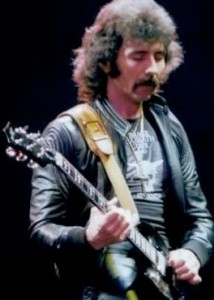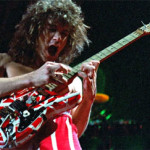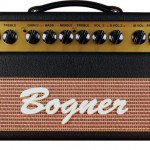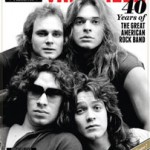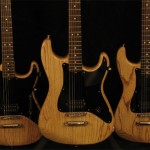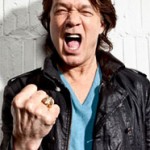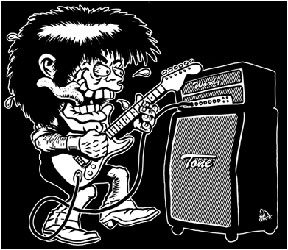Tony Iommi’s ‘Mob Rules’ Gear Details
I had another satellite radio inspirational moment yesterday when Sabbath’s “Voodoo” came on in the car. What a tune. Great singing and what a frickin’ nasty guitar tone. Sounded like uber-preamp gain with a cocked wah but not too fizzed out or mushy. So I went on the info hunt…
…and of course since no one realized at the time that Mob Rules and many other albums were classics, little was captured gear detail-wise at the time. And yet there are enough pieces to puzzle it out. So here goes.
Seems that Tony Iommi’s main guitar at the time (1981) was the John Birch SG (see pic above), though he apparently also used the John Diggins-made Jay Dee SG too. His effects also seem to have largely remained the same, with at least one treble booster – he used at least one all the time in the early days, and it has been one key to his tone – on all the time or sporadically, and a Tychobrahe Parapedal wah.
Beyond that, it really comes down to amps. In the Ozzy Sabbath years, Tony was a Laney man but used various tricks to get the gain he was craving, including two treble boosters on the floor, maybe some amp tweaks, definitely pickup tweaks, who knows what else.
But when Ronnie James Dio joined the band for the Heaven and Hell album, followed by Mob Rules, Tony wanted a different sound and was still on the “more gain” hunt.
Since gainier amps were now available, he tried them, starting with a modded Marshall Super Lead for the Heaven and Hell album. The following is from the website of John “Dawk” Stillwell, who was a tech for the Dio-era Sabbath as well as a long-time guitar/amp tech for Ritchie Blackmore:
“Having befriended Ronnie James Dio a decade earlier, when he worked with Ronnie Dio and the Prophets, Dawk was thrilled when the legendary vocalist called one day in 1979 and asked Dawk if he would come to Miami, Fla. to work on one of Black Sabbath guitarist Tony Iommi’s amplifiers. The amp was so important to Iommi that it was delaying the recording of Dio’s debut with the band, Heaven and Hell.
‘When I arrived in Miami, near the band’s recording studio, I was given my own room in the villa that Sabbath was renting and immediately got down to the task at hand,’ remembers Dawk. ‘The amplifier in question was a new 1959 model 100-watt Marshall amplifier whose tubes were destroyed when it was shipped from England.
‘Iommi was also unsatisfied with the stock Marshall’s sound. He was looking for more crunch and distortion than the stock Marshall sound, which is the reason most musicians settle for adding a distortion box to their line of effects even though it is prone to picking up radio stations, television signals and other extraneous noise.
‘The only way I could accommodate Iommi was by designing a new circuit for the amplifier that included an extra tube and a new way of wiring a master gain control [he did something similar for Blackmore’s Marshall Majors]. Between rejuvenating laps in the villa’s pool, I came up with a circuit board so good that it can be used in 50 watt, 100 watt, and 200 watt Marshall amplifiers.’
There seems to be some question about which amp, or amps, Tony used in the studio for Mob Rules as he also experimented with Mesa/Boogies during this time (see vid below) and Mesa/Boogie is credited in the Mob Rules liner notes. It looks from the info out there that he used either the modded Marshall or that head and a Boogie (a MarkIIB Coliseum) on Mob Rules. Both apparently were used with a Marshall 1960/B cab.
On Voodoo in particular, you can hear the gainer amp, what sounds like more gain on top of that (the treble booster) and a cocked wah. Amp setting-wise, it’s worth noting that Tony has generally not been a fan of bass.
Live on the Mob Rules tour it seems he used the Boogies, but then went back to Laneys – but may have used Boogies on the Born Again album (1983). Dawk Stillwell said on his site: “My ‘Marshalls’ were too powerful for him, and by then Laney had copied Marshall and was building some good amps. The bottom line is Tony was always a Laney man.”
Notable
> Someone wrote online: “A lot of John Birch guitars, particularly the SG models, have a built-in booster amp run from a 9V battery. Just a tiny pre-amp based on an LM780 IC with 8 legs, but not visible, like a pedal.” More gain!
> On his tone, from the defunct modernguitars.com:
After all these years, does your signature tone come naturally to you or do you still work hard at getting good tones?
“I took a long time working on it. Years and years. I’ve never been totally satisfied with it. I always keep trying. Even now, on stage, some nights it doesn’t sound quite right – it’s the building or the stage or whatever. But 90% of the time I’m happy with it.”
> Outtakes from a Guitar World interview:
How did Ronnie James Dio join Black Sabbath?
“I saw Ronnie at a party and we had a chat. I was really in a rut and I knew that I had to do something. We spoke a few more times after that, and after Ozzy left I gave him a call and asked if he’d fancy having a go with the band. We had this house in L.A. where we all lived, and we had set up a studio in the garage. Ronnie came over and we played him one of the riffs we had been working on. When he sang over it we looked at each other and went, ‘Bloody hell! This is it.’ And it was. I had an idea what it was going to sound like because I had heard all of the stuff Ronnie had done with Rainbow, but it still was magnificent.”
What did you think when you heard the first Ozzy’s Blizzard of Ozz album with Randy Rhoads?
It was quite good. I loved Randy’s playing. I didn’t rush out right away to buy Ozzy’s album because I was into what we were doing at the time. But I was pleased for Ozzy. It was the spark that got him going, and it was exactly what he needed.
> From a 1982 interview with Tony about the formation of Dio-era Sabbath:
“The record company was pushing us for tracks and they were asking to hear some tracks. We had come to a decision of either we’re going to just break up or Bill and Geezer said to me that if we don’t do something, they’re going to leave anyway. We came to the decision to talk to Ozzy and give him an ultimatum: If you don’t do something, we’ll bring in another vocalist. And that’s what we did. We brought in (Ronnie) Dio and had a go with him. And it was funny, Ozzy’s present wife had suggested Dio, as a matter of fact.”
Category: Laney, Marshall, Mesa/Boogie, Tony Iommi/Black Sabbath, Tychobrahe

